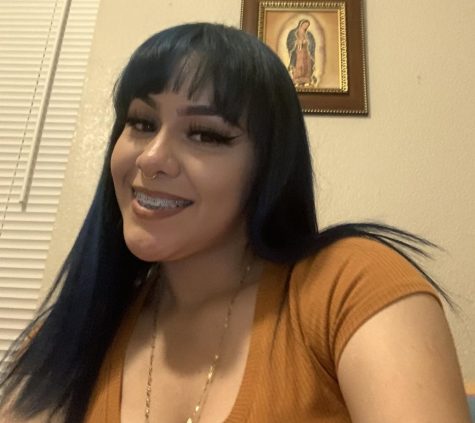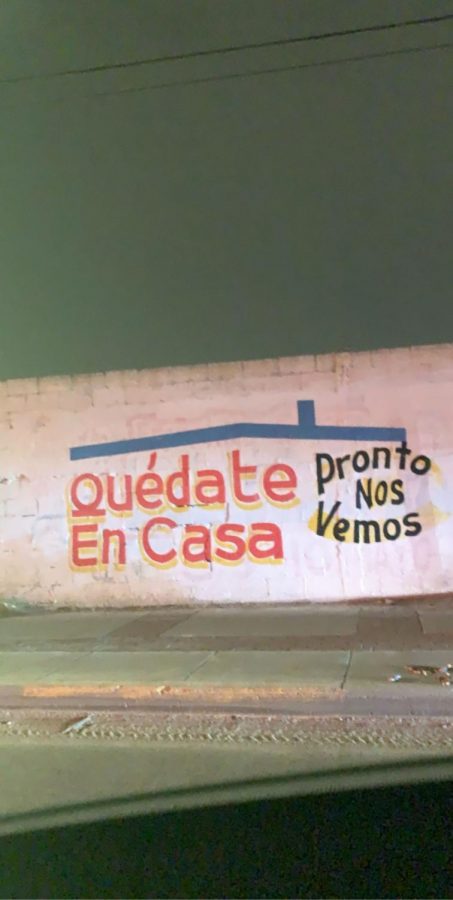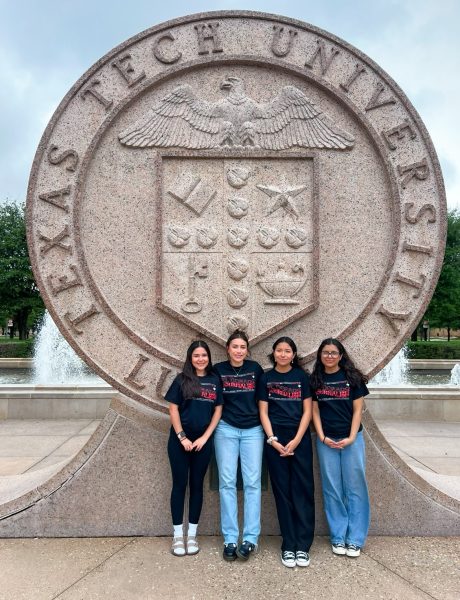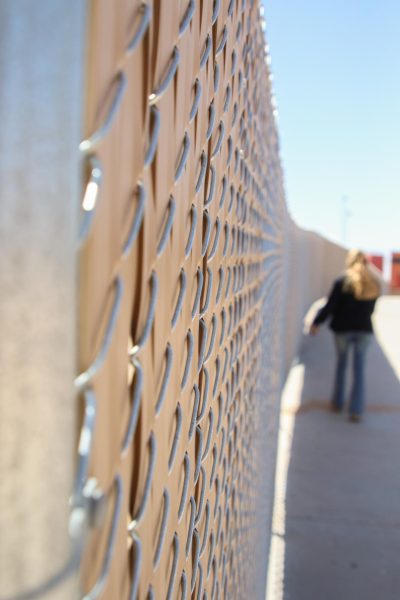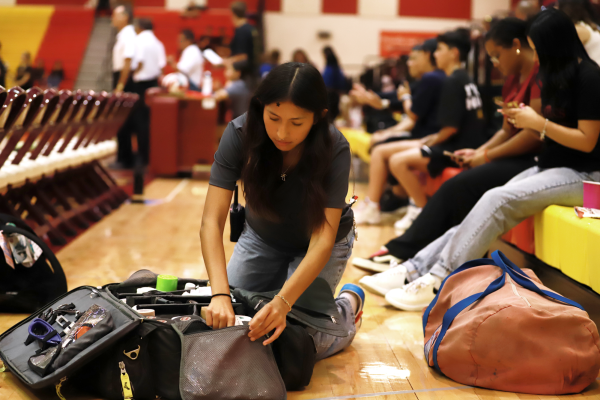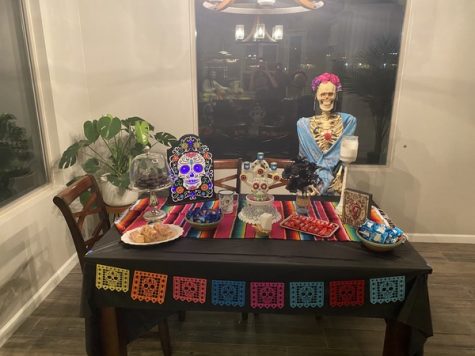La Frontera in COVID Times
Students deal with family separation due to border closures in pandemic
Photo by Den
A student takes a photo of a message posted near the border crossing in Ciudad Juarez, to stay at home.
COVID-19 came sweeping into the United States, tearing down every last bit of normalcy society once knew. Schools were the first to go, when spring break was extended on March 14, 2020. Then came the closing of restaurants, gyms, parks and all public entertainment. The last to fall was la frontera – the border.
On March 21, 2020 the U.S-Mexican border was shut down in an effort to slow down the spread of COVID-19 across the United States. For senior Kevin Arroyos, this hit closer to home as the door to his second home was sealed off to him indefinitely.
“At the beginning of the pandemic when the borders first closed, it really affected me,” Arroyos said.
Arroyos and his mother spend a lot of time in Juárez, México while the rest of his close family resides in Socorro, Texas. Before the pandemic, he would split his time between both worlds and heavily used the bridges to visit family, attend school and hang out with his peers from El Paso.
“I can’t describe how the border closing made me feel,” Arroyos said. “When I crossed the border, I got to see my family from both sides and now I just couldn’t.”
The border closure banned all nonessential travel to and from México, including shopping. Travel for work, medical and educational purposes was permitted. However, crossing the border still put people at risk of catching the virus.
“I didn’t feel safe crossing the border anymore,” Arroyos said. “I did not want to put myself and my family at risk like that.”
Senior Jose Adrian Lopez Vazquez depends on crossing the border to be able to spend time with his family.
“I don’t cross the border every day, I do so frequently though,” Vazquez said. “It was honestly sad knowing the border was getting shut down, since I basically depend on the border to see all my family and friends that live in Juarez.”
Shutting down the border only worked for a few days and then the border was open again as if there wasn’t a pandemic going on. As it opened back up again, it came with few restrictions. For example, entrance to the United States was limited to only United States citizens and residents, so people with a VISA were not able to cross.
“My priority now is simply seeing my family as soon as possible, I also think it’s fair we have these restrictions for security purposes and to avoid more deaths due to the virus,” Vazquez said.
With restrictions put in place, Vazquez found ways to adapt to these changes to help prevent the spread of COVID-19. Although doing the best he can, Vazquez can’t help but feel upset at those who violate the guideline as it prevents him from being able to cross the border as easily as he could before.
“I feel bad since I really think it could’ve been over a long time ago if only people followed rules and didn’t go out as much, some advice for those impacted by the changes would be to just be patient and keep on with following the rules so all of this can be over or at least controlled as soon as possible,” Vazquez said.
The border closing has imposed emotional and economic setbacks to both Juarenses and El Pasoans. The empty streets and boarded-up display windows of downtown stores indicates the loss felt by an absence of Mexican shoppers.
As Customs and Border Patrol cracked down on non-essential travel, wait times on the bridges also ballooned to five to eight-hour waits, according to a September 2020 El Paso Times article.
The non-essential travel ban was extended month after month and is now scheduled to reopen exactly one year since it first closed – March 21, 2021.
“I was able to see through the setbacks it brought me and see how the closure really prevented COVID-19 from spreading,” Arroyos said.
